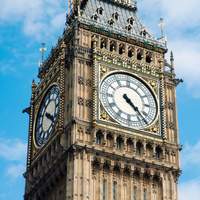What happens after Brexit – the morning after 29th March 2019
| 06-11-2017 | treasuryXL |

On the 23rd June 2016, Britain voted via a referendum to leave the EU. On the 29th March 2017 they invoked Article 50 starting the process to leave the EU, meaning they should leave on the 29th March 2019. Between now and then, negotiations are taking place between Whitehall and Brussels to agree the terms of Brexit. But what are the consequences if there is no agreement by the 29th March 2019?
This is the so-called Hard Brexit – but what does it really mean for businesses and individuals? The EU has stated that Britain can not receive favourable treatment – President Juncker has stated that Britain must pay. So if Britain does not pay and no agreement is reached, what happens after Brexit?
Trade will still continue, but in all reality, it will be subject to WTO rules. Both the EU and Britain are members of the WTO, so a framework does exist even if it is just that – a framework with no body. The simple concept would be covered by the existing EU’s Common Customs Tariff, which details a broad range of taxes on imports. This is a starting point for ascertaining what the likely costs would be.
There is a healthy trade between Britain and the EU, resulting in a surplus for the EU in the region of EUR 100 billion per year. According to a report from Civitas (an independent think-tank) looking at physical goods, exports from Britain would incur tariffs of EUR 5.9 billion per year, whilst exports from the EU would incur tariffs of EUR 14.5 billion per year.
This is a macro approach looking at trade at the most global level. When a micro approach is applied, there are significant variations between different industries and products. Dairy products attract tariffs of 40 per cent, flour 25 per cent, plastics 6 per cent, and wood 2 per cent, Additionally the tariffs on exports to Britain per country in the EU vary greatly; Germany EUR 2.8 billion, Netherlands EUR 1.7 billion, Italy EUR 1 billion, Portugal 0.2 billion.
So, what can you do to prepare for Brexit?
The scenario shown above is a guideline on the basis of no deal, which is assumed to be the worst-case scenario. It would be prudent to download the guidelines from the WTO and understand what tariffs your products would attract – this is for imports as well as exports. Using the guide lines you can calculate what the effect would be on your business. At least this would provide you with a base line for future calculations. This can enable you to analyse your expected data and could lead to you seeking out other markets or looking at ways to reduce costs if price increases can not be directly passed on.
What about the logistical problems?
With a Hard Brexit there will be no free movement of goods. Trucks will be stopped at customs and have their goods verified; this will add to the travelling time and add to the costs. This means that it will be necessary to ascertain which ports are the most efficient and have the least delays etc. British goods could be determined not to meet EU standards and vice versa.
Conclusion
- With no agreement, costs will increase for companies and individuals
- There will be uncertainty over laws and regulations
- There could be logistical problems
- Ex-pat citizens do not know where they stand
A change is coming – do not be unprepared. Make your own risk assessment on your business and create contingency plans based on the worst case scenario.











